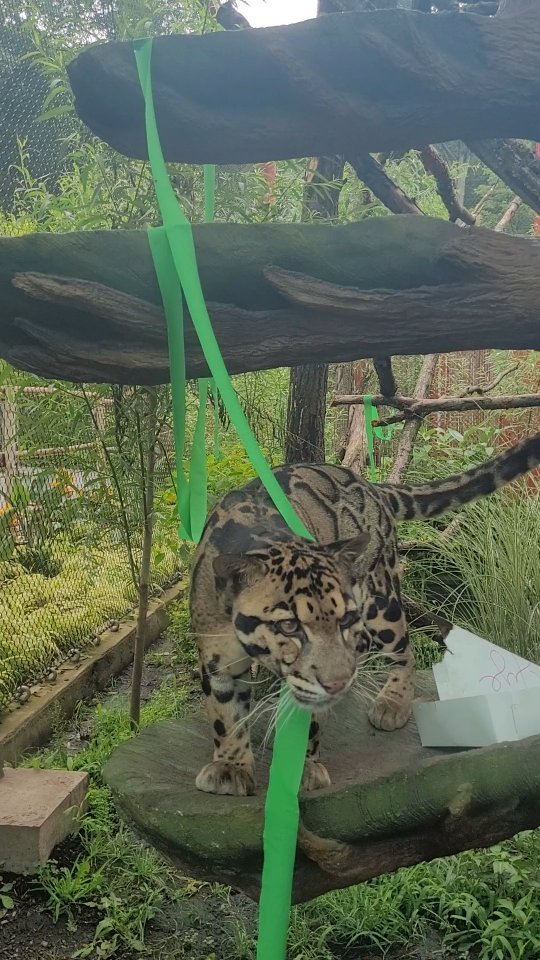- Importance of International Clouded Leopard Day
- Clouded Leopards: Species Overview and Conservation Status
- Breeding Programs and Genetic Management
- Role of Turtle Back Zoo and Species360 in Conservation
- Reintroduction Programs and their Impact
Happy International Clouded Leopard Day! This special day shines a spotlight on one of the most vulnerable and majestic big cats in the world—the clouded leopard (Neofelis nebulosa). As we celebrate these incredible animals, let’s delve into their biology, conservation status, and the concerted efforts required to safeguard their future.
Clouded Leopards: Species Overview and Conservation Status
Clouded leopards are arboreal predators found mainly in Southeast Asia, inhabiting dense forests. Their name derives from distinctive cloud-like spots on their coats, a hallmark of their breathtaking beauty. Unfortunately, clouded leopards are classified as vulnerable by the International Union for Conservation of Nature (IUCN). It is estimated that fewer than 10,000 mature individuals remain in the wild, largely due to habitat loss, poaching for their pelts and bones, and the depletion of their prey.
With only around 70 individuals in zoological institutions globally, the genetic diversity of captive populations is worryingly low. This low genetic variability poses challenges for breeding programs aimed at conserving the species. Proper management of these populations is crucial to sustaining clouded leopards in captivity and potentially reintroducing them into their natural habitats.
Breeding Programs and Genetic Management
Effective breeding programs are central to maintaining clouded leopard populations in captivity. At Turtle Back Zoo (TBZ), the staff play a pivotal role, managing the international studbook for clouded leopards. This studbook contains comprehensive records of each animal’s genetic makeup, health status, and breeding history, serving as an essential tool for making informed breeding decisions.
Jye and Molly, the clouded leopards at TBZ, are part of the Association of Zoos and Aquariums’ Species Survival Plan (SSP). The SSP is a cooperative breeding and conservation program that pairs animals based on genetic diversity, health, and temperament. This careful planning ensures the long-term viability of clouded leopards in human care. Breeding recommendations aim to maximize genetic diversity and health, crucial factors for the success of reintroduction efforts.
Role of Turtle Back Zoo and Species360 in Conservation
Turtle Back Zoo is deeply committed to clouded leopard conservation, contributing invaluable data to global efforts through Species360. Species360 is a nonprofit organization that applies the Zoological Information Management System (ZIMS), the world’s largest database of species data, to track and manage animal welfare worldwide.
Each day, TBZ staff input data ranging from behavioral observations to environmental conditions, enriching the global knowledge pool. ZIMS for Studbooks is a specialized tool utilized by conservation teams worldwide to maintain the genetic diversity and health of animal populations in captivity. This database aids in the formulation of breeding plans and ensures that reintroduction programs have a solid foundation for success.
Through Species360, conservationists can access a wealth of information to make evidence-based decisions, reducing the risk of genetic bottlenecks and enhancing the genetic diversity of the species. TBZ’s active involvement in these efforts highlights the zoo’s commitment to global wildlife conservation.
Reintroduction Programs and their Impact
Reintroduction programs are a vital component of clouded leopard conservation. These programs aim to reestablish populations in their native habitats, where they have been severely diminished. The success of reintroduction is contingent on various factors, including habitat quality, prey availability, and the genetic health of the reintroduced animals.
Conservation institutions work tirelessly to prepare clouded leopards for life in the wild. This preparation involves acclimatizing animals to their natural habitats, ensuring they have the skills to hunt and avoid human-wildlife conflicts. The data gathered via ZIMS informs these projects by providing insights into the animals’ needs and helping track their progress post-release.
In conclusion, celebrating International Clouded Leopard Day is a reminder of the collective efforts required to conserve these extraordinary animals. Clouded leopards face significant threats in the wild, and their survival depends on meticulous management of captive populations, robust breeding programs, and effective conservation strategies.
Through the combined efforts of institutions like Turtle Back Zoo and the extensive data resources of Species360, we can work towards a future where clouded leopards thrive both in captivity and in the wild. By raising awareness and supporting these initiatives, we can contribute to the preservation of this stunning species for generations to come.
*****
Source Description
Happy International Clouded Leopard Day! 🥳
Clouded leopards (Neofelis nebulosa) are a vulnerable species. It is estimated that fewer than 10,000 mature individuals remain in the wild. The population in human care is around 70, and genetic diversity is presumed to be very low.
At TBZ, our staff maintains the international studbook for clouded leopards.
Our clouded leopards Jye (seen here) and Molly are an Association of Zoos and Aquariums’ Species Survival Plan (SSP) recommended breeding pair. The SSP scientists determine which animals to breed by considering their genetic makeup, nutritional and social needs, temperament and overall health.
As a member of global nonprofit Species360, Turtle Back Zoo contributes data on the animals and groups in its care every day, from lifecycle traits to environmental needs.
Species360 Zoological Information Management System (ZIMS) is the world’s largest source of data on species. ZIMS combines the data from TBZ with contributions from like-minded species conservation institutions worldwide.
ZIMS for Studbooks is utilized by conservation teams worldwide to ensure the genetic diversity and health of animal populations in human care. This is critical for reintroduction programs, where conservation institutions work to reestablish native species in their natural habitats, ensuring these populations are healthy and sustainable.


